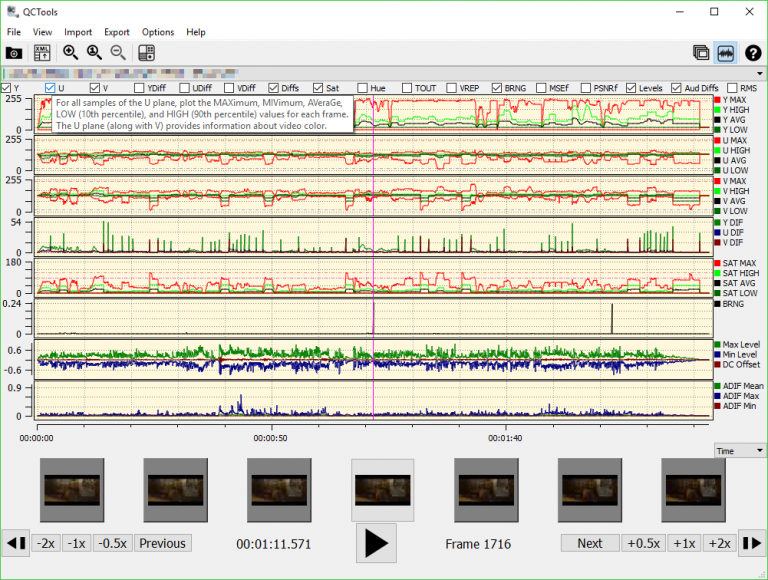Analyze and compare video quality with QCTools

QCTools is an open-source cross-platform tool for analyzing and objectively measuring video quality.
The program is aimed at helping professional users identify problems with digitized footage, but it could also help to compare video codecs, conversion tools and more. QCTools is available for Windows, Linux and Mac. It’s a lightweight package -- a single executable and a few text files -- and installed easily on our test PC.
Drag and drop a video or two onto the program and it begins analysis. This is an in-depth, frame-by-frame process, so you’ll probably need to be patient (even a 150-second test video took 120 seconds to analyse on our test PC).
Once it’s done, QCTools displays a large table with lots of figures -- Yav, Yrang, Uav, Vav, TOUTav, TOUTc, SATb, SATi, more -- and if you’re not a video expert you’ll probably have no idea what any of them mean.
But wait: there is hope. Hover your mouse cursor over the column headers and you’ll find a few clues: Yrang turns out to be a measure of contrast, and the SAT figures measure "illegal color values".
A "Getting Started" section in the Help file is also useful. TOUTs, it explains, are temporal outliers -- measures of the differences between a pixel and its near neighbors -- which could help detect noise, or physical tape transfer issues (creasing, tracking, skew).
A separate Graph View (View > Graphs layout) puts these values in context by showing how they change over the timeline of a video. If there’s a color problem, for instance, you’re able to see where any spikes occur in the video, and dragging a cursor to that point displays the nearby frames.
The Graph View has optional extra filters, too. Checking "Audio Diffs" displays a graph of audio differences across the timeline, highlighting sudden large changes between consecutive audio frames.
While this can be handy, what we really wanted to know was whether QCTools’ stats could tell us anything about video quality. To get an idea, we took some HD videos, created multiple versions with different codecs, bitrates and resolutions, and had them all analyzed by the program.
The results were generally impressive. Several values didn’t change much at all, but others -- particularly the TOUT figures -- proved much more useful, successfully placing all our test videos in quality order.
We don’t know whether this will work in every situation. Our movies were bright, detailed, with high contrast -- maybe night shoots would be entirely different. If you want to try this yourself, we’d recommend you run your own tests, take short sample videos, analyze them with QCTools and find out which of its figures give you the best measure of quality.
What we can say is the program is capable of good results, and that presents all kinds of interesting possibilities, comparing codecs, video conversion settings, maybe even the footage from different cameras if they’re shooting similar scenes. If any of that appeals, and you’re willing to invest the time experimenting, give it a try.
QCTools is available for Windows Vista and later, Linux and Mac.